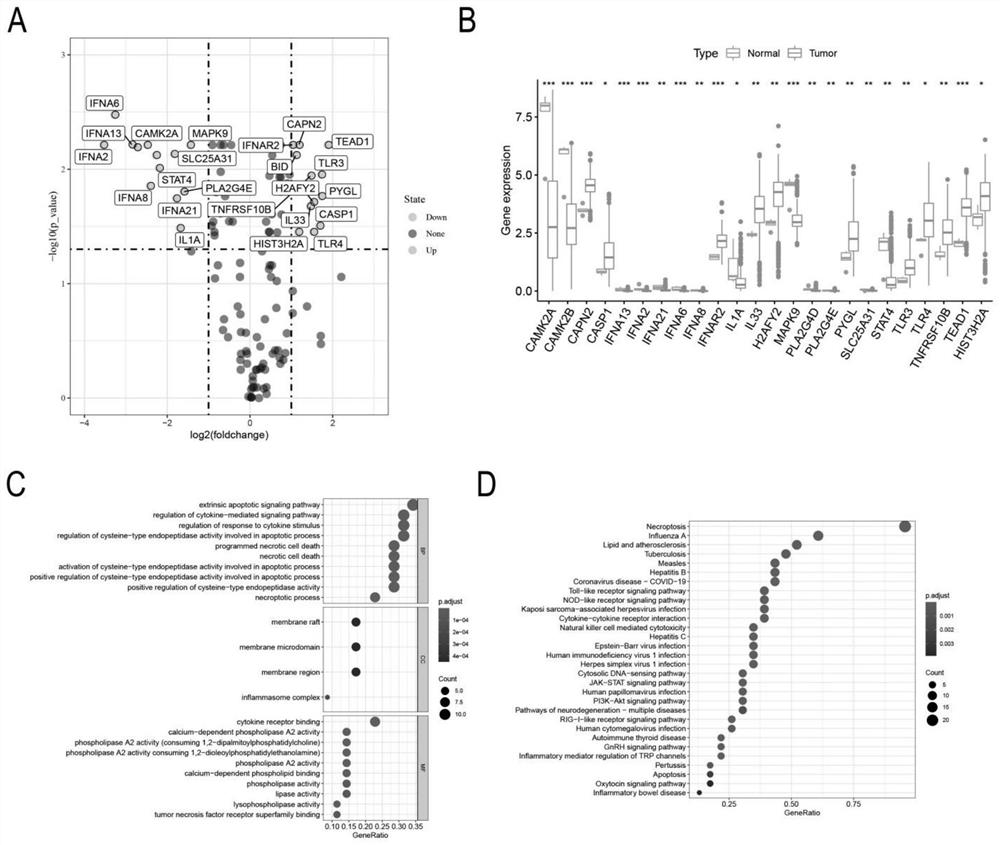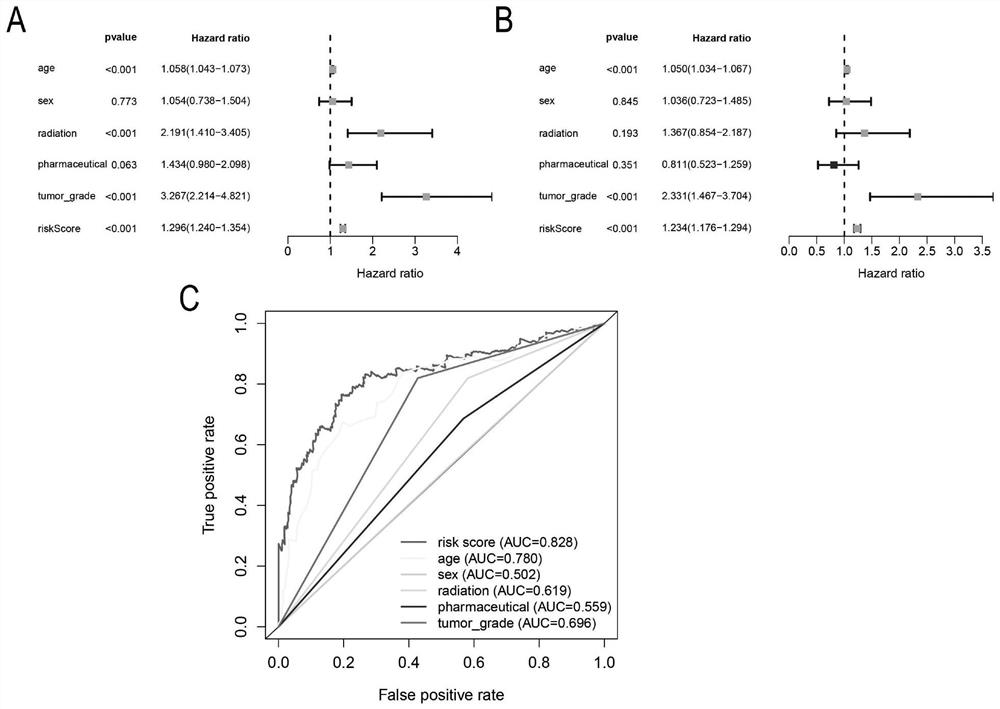Application of model constructed based on necroptosis-related gene combination in preparation of product for predicting prognosis of low-grade glioma
A technology of necroptosis and gene combination, which is applied in the application field of preparing products for predicting the prognosis of low-grade glioma, and achieves the effect of good and high predictive performance
- Summary
- Abstract
- Description
- Claims
- Application Information
AI Technical Summary
Problems solved by technology
Method used
Image
Examples
Embodiment 1
[0026] Screening of necroptosis-related genes and model construction for prognosis prediction of LGG
[0027] (1) Acquisition of patient information: The low-grade glioma RNA sequencing data (RNA-seq) and corresponding clinical data, including age, sex, stage, overall survival time and survival status, were downloaded from the CancerGenomeAtlas (TCGA) website. To reduce statistical bias, patients with no survival information or with a survival time of less than 30 days were excluded from further evaluation, and after screening, 529 LGG patients in the TCGA database were finally included in the analysis.
[0028] (2) Screening prognosis-related necroptosis-related genes as prognostic biomarkers or constructing prognostic models: necroptosis-related genes were collected from KEGG, and 161 necroptosis-related genes were retrieved according to the available mRNA expression data of LGG in TCGA. Apoptosis-related genes. By comparing tumor tissue and normal tissue, 12 genes were up-...
Embodiment 2
[0039] 4. The guiding significance of prognostic model for prognostic treatment
[0040] IC50 values for several high- and low-risk drugs (various antineoplastic drugs recommended for the treatment of low-grade glioma: bortezomib, cyclopamine, The sensitivities of satinib, rapamycin, and roskovetine were compared between groups, and the results were as follows Figure 8 , bortezomib (P Figure 8 A-E) Sensitive. In addition, we used Tumor Immune Dysfunction and Rejection (TIDE) to assess the potential clinical efficacy of immunotherapy between the two groups. We calculated TIDE scores for each patient, ranging from -0.5-1.23, with higher TIDE scores in patients in the high-risk group than in the low-risk group ( Figure 8 F). Since a higher TIDE score indicates a higher possibility of anti-tumor immune evasion and less likely to benefit from immune checkpoint blockade therapy, patients in the high-risk group may have immune evasion, which also explains the high-risk group. ...
PUM
 Login to View More
Login to View More Abstract
Description
Claims
Application Information
 Login to View More
Login to View More - R&D
- Intellectual Property
- Life Sciences
- Materials
- Tech Scout
- Unparalleled Data Quality
- Higher Quality Content
- 60% Fewer Hallucinations
Browse by: Latest US Patents, China's latest patents, Technical Efficacy Thesaurus, Application Domain, Technology Topic, Popular Technical Reports.
© 2025 PatSnap. All rights reserved.Legal|Privacy policy|Modern Slavery Act Transparency Statement|Sitemap|About US| Contact US: help@patsnap.com



